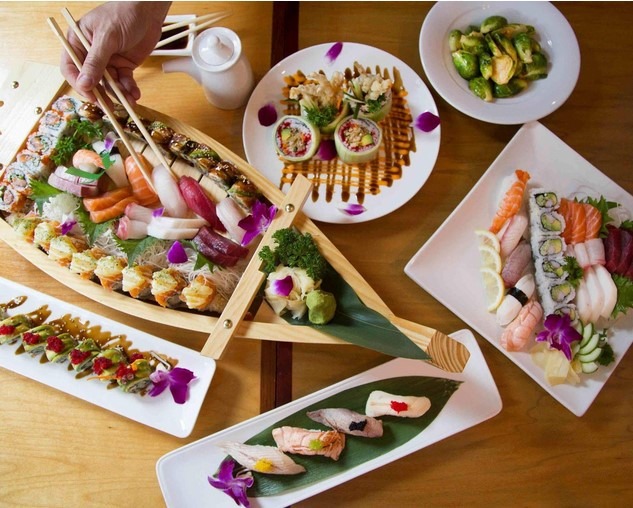Decoding Japanese Restaurant Menus for Travelers

Guide For Decoding Japanese Restaurant Menus
Many people and travelers find Japanese one of the hardest languages to learn, yet dining out shouldn’t be intimidating! With some preparation and understanding of some basic vocabulary, even inexperienced diners can easily navigate a Japanese menu. This article covers ordering food in Japanese and understanding the basics of the Japanese menu. Read along to learn more about Japanese restaurant menus and how to order your food confidently!
While requesting a recommended menu can be an excellent way of experiencing local Japanese cuisine and expanding your vocabulary practice, understanding a Japanese menu is key to having an enjoyable dining experience in the Japanese sushi bar. Let’s start by getting acquainted with some important Kanji characters. The simplest and most straightforward way to say “menu” in Japanese is meniyu (meh-ni-yuh).
Below Discussed Is the Japanese Cuisine Menu:
Osusume
Osusume refers to the special recommendations made by the restaurant and often features seasonal cuisine. One way of asking for a recommended menu is by saying, “Osusume wa nandesuka?” Which translates to: what would you recommend? This approach can be especially helpful if you want to explore something unfamiliar but are familiar with its language or cuisine. Visit a nearby authentic sushi restaurant to try this and explore more about the Japanese cuisine menu!
Otsumami
Otsumami is typically served with beer or other types of alcohol. It can range from edamame and yakitori, two traditional Japanese condiments. Deep-fried items with more grease or spice pair better with beer, while simmered, pickled, and grilled dishes go better with sake. In Japanese, otsumami is any snack or simple dish intended to be enjoyed alongside drinks. Next time you visit any sushi bar restaurant, try this out and enjoy your alcohol in a Japanese style!
Osashimi
Osashimi in the Japanese cuisine menu is all about the fresh fish and seafood available for you to explore, enjoy, and experience in Japanese style. Learning Japanese menus requires being able to recognize characters that represent each section. Acquiring these Kanji will prove invaluable in understanding their structure. You can take a local Japanese friend or someone who understands Japanese well enough to order the right food at an authentic sushi restaurant.
Himono
Himono is a traditional Japanese breakfast staple, consisting of fish soaked in mirin and dried before being served to guests. Himono contains more calcium, phosphorous, and iron than raw seafood products, making it highly nutritious. Himono is inexpensive and easily prepared, so it frequently appears at dining tables on every Japanese restaurant’s food menu!
Nimono
Nimono, also known as one-pot cooking, is the cooking of food in a single vessel while it is simmering in a stock made of ingredients like dashi, soy sauce, mirin, or sake. Nimono dishes form the foundation of the Japanese cuisine menu and add comforting and familiar flavors to daily meals and special events.
Kushimono
Kushimono includes food items like meat, vegetables, and seafood, which may be grilled over a flame or breaded with deep-fried ingredients. Japanese menus don’t only offer traditional offerings such as sashimi, yakitori, and udon; they also include more unique words for their menu items. Check out the latest Japanese restaurant food menu for a more authentic Japanese experience.
Gohan mono
Gohan mono is the name for rice-based meals served in authentic sushi restaurants. These dishes may range from simple to complex depending on what is being ordered and its price point. Most establishments will feature menus written in Japanese and English, though sometimes both forms will be printed together on one page.
Aburi Sushi
Aburi sushi combines the delicate balance between fire-kissed perfection and raw fish with its raw underside for an explosion of flavors. Aburi sushi is often served with various accompaniments, adding zesty accents and tart sauces for an unforgettable sushi experience. This technique allows chefs to highlight the distinctive features of each type of fish while adding an unexpected layer of complexity that dances on your palate. Simply searing certain varieties on their surfaces creates this masterpiece of taste! You will surely delight your senses!
Yakimono
Yakimono is the Japanese term for grilled dishes made with meats such as beef, chicken, and shellfish, usually served with creamy garlic sauce, butter garlic sauce, yogurt curry sauce, or Thai chili. You must read and interpret a menu without making mistakes when dining out in a Japanese sushi bar restaurant. Without images to guide your ordering, Kanji must be read correctly to order what you need without calling something you didn’t intend.
Conclusion
Japanese restaurant menus contain only Kanji characters, making ordering daunting for those unfamiliar with Japanese. But don’t panic; following and practicing the above mentioned terms will help guide you around this confusing language!
If you’re uncertain what to order, the wait staff at the Japanese sushi bar will gladly explain it to you in English as long as you remain polite to them! Always remember they make part of your dining experience, so always remain polite when speaking with wait staff members! This practice is especially common at seasonal or specialty establishments like Japanese. Staff will typically know which items are popular or seasonal – or perhaps something perfect for you as a vegetarian eater! Just tell them you don’t eat meat, and they will gladly suggest something suitable!
With just a little preparation and practice, navigating Japanese restaurant menus won’t be intimidating any longer – don’t be intimidated into trying unfamiliar cuisine – who knows – maybe you may end up liking something!
****************************




